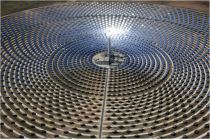 The problem of providing pensions for retirees is becoming acute. Dependency ratios are climbing in all western countries. By 2050 they will double in most western countries. In Japan, the number of retirees, now 35 percent of active workers, will reach 80 percent. Most European countries will have dependency ratios greater than 50 percent. The US, now about 20 percent, lags a little, because of continued immigration (mainly from Latin America), but the ratio will rise to 40 percent by 2050.
The problem of providing pensions for retirees is becoming acute. Dependency ratios are climbing in all western countries. By 2050 they will double in most western countries. In Japan, the number of retirees, now 35 percent of active workers, will reach 80 percent. Most European countries will have dependency ratios greater than 50 percent. The US, now about 20 percent, lags a little, because of continued immigration (mainly from Latin America), but the ratio will rise to 40 percent by 2050.
So there is no way retirement incomes for ever more elderly people can be paid for by taxing currently active workers in the future. So-called “defined benefit” pension funds were already in a difficult spot by 2007 because of aging populations.
The ratio of assets to liabilities for such pension plans declined by 25 percent from 2007 to 2010. The financial crisis of 2008 made this shortfall much worse because the ratings agencies (which helped to create the problem) have been forced to downgrade many mortgage-based securities to point where they are no longer “investment grade”. Now, these funds are faced with the task of producing higher returns for a growing class of beneficiaries.
Companies have been replacing “defined benefits” retirement plans with “defined contribution” plans, leaving the problem for individual retirees to solve for themselves (presumably by investing in the stock market). But, while brokers love the idea, stock markets do not always rise as predicted. Increasing the retirement age is only part of the solution, at most, because life expectancy is increasing rapidly. Cutting benefits is considered to be politically impossible (with the possible exception of de-linking benefits from inflation).
The only way out of the bind is to increase the returns on long-term investments. That is where renewable energy investments can contribute.
# # #
